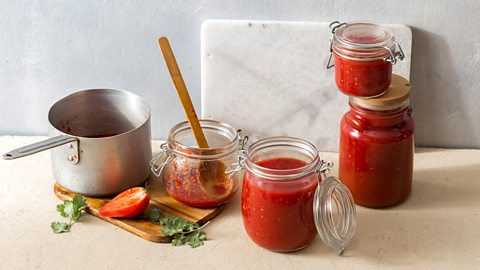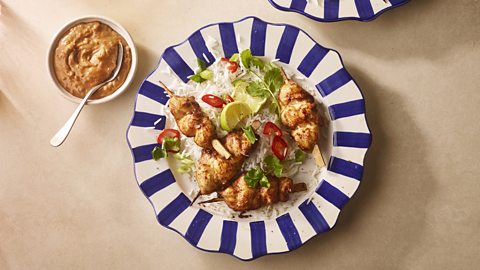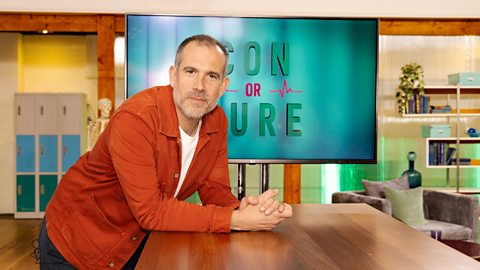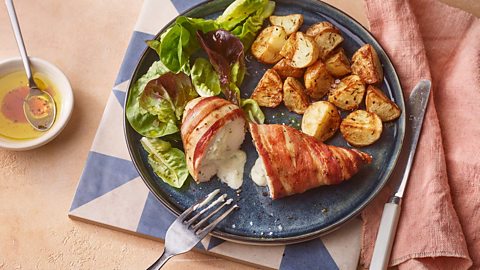Surprising things I learned when I gave up sugar for a week
While a week without sugar didn’t seem like the most exciting prospect, it also didn’t feel particularly challenging. Turns out, there’s more to going without the sweet stuff than giving up biscuits. Here’s what you need to know before attempting it yourself.

A friend recently told me giving up sugar was one of the hardest things she’d ever done. I thought it sounded pretty easy. I don’t eat many cakes or sweets anyway, so how tough could it really be? I felt like I had something to prove, so I decided to go on my own no-added sugar (NAS) mission for a week.
I knew cakes, biscuits and chocolates would be off the table, and that I’d have to alter other parts of my diet slightly too. As it turned out, there were far more obstacles ahead than I realised.
Savoury foods you wouldn’t expect to have sugar (but do)
It’s day one of my challenge. I naively assume I can eat my favourite lunches and dinners without making sacrifices and am excited about fajitas for dinner – until I discover that shop-bought wraps contain added sugar.
Uh oh – that’s half my usual meals off the menu, then (yes, I really do eat wraps that often).
With a rising sense of panic, I check the labels on the foods in my cupboard and find many of them contain sugar, even the loaf of wholemeal bread that I always thought virtuous.
I decide to make lentil dal instead, but then comes the second setback: there’s sugar in my stock. I make do without it and use water instead. I’ll have to put extra effort into giving my food any kind of flavour this week.
On day two I nip to the supermarket, expecting it to be a quick visit. How optimistic.
I scour the ingredients lists on packets, cartons and bottles for added sugar – as well as things ending in ‘ose’ (fructose, glucose, dextrose and maltose). The sugar in honey, syrup and even fruit juice are classed as ‘free’ sugars, so are off the menu.
I’m surprised to find the second ingredient on the label for my favourite massaman curry paste is sugar, with a small jar containing more than 10g. That’s around two and a half teaspoons.
This means ditching this dinner entirely or making my own paste – I of course decide on the latter. Armed with chillies, lemongrass, galangal, lime leaves and star anise (I have the remaining ingredients at home), I eventually leave the supermarket and head for my kitchen to start cooking (which also takes longer than usual – although the result was, I have to admit, much tastier).
Related stories
Learn more about different sugars on BBC Food
Is honey healthier than refined sugars? Find out with this article

Handling the cravings
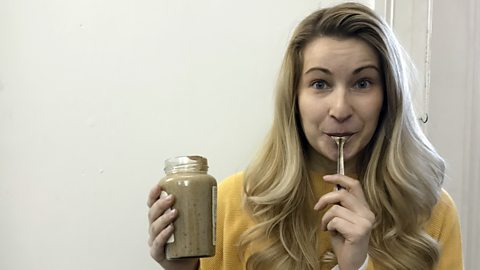
It’s day three – 48 hours since I started my NAS mission. I don’t make a habit of scoffing biscuits (often), but today I feel like the Cookie Monster.
I casually eat NAS peanut butter from the jar. I go way overboard and feel a tad sick, but at least I get rid of my cravings. For now.
Wanting to know why all I can think about is digestives, I ask dietitian Sophie Medlin.
“If you deprive yourself of something, you will think about it more often,” she says. “It can work both ways: if you only eat junk food for a week with no access to a homemade healthy meal, you might start craving a salad.”
From chocolates in the office to biccies in meetings and the free croissant I’m given for cycling to work, sugar is being offered to me left, right and centre. Even the church I walk past at lunchtime is giving away free brownies.
Being a sucker for a freebie, I’d usually eat everything without thinking about it. I also feel rude turning things down. I’m not sure if it’s the universe making my challenge harder or if this is the way it always is and I’ve never noticed. Either way, avoiding sugar requires a lot more restraint than I’d anticipated.
These sugar-free snacks are great for grazing
I’ve never eaten 10 fresh apricots or figs in one sitting before, but when they’re shrivelled up and dried it doesn’t seem so excessive somehow. Could this be how I finally satisfy my sweet tooth?
Dried fruit contains fibre, so it isn’t classed as a free sugar (that said, some do contain added sugar, like some dates and cranberries, in the form of sucrose or fruit juice, so it helps to read the packets).
I find myself hovering around the dried fruit at the supermarket on my next visit, but decide to avoid temptation. It would be so easy to eat loads of it with the cravings I have – who knows when (or if) I’d stop?
Comfort ingredients which contain, yep, sugar
Some people can’t do without ketchup, but I have sriracha or soy sauce with almost every other meal. These generally contain sugar, and finding replacements is tough. Eventually I discover a hot sauce without added sugar, but it’s more suited to Mexican than South-East Asian food. There’s no good replacement for soy sauce at all, eliminating some of my favourite dishes.
To add insult to injury, I’ve picked up a cold and cough. Normally, I’d reach for cough sweets or syrup but both are off the table (the clue is in the names). I also realise most of my homemade remedies contain honey, which is off limits for the week too.
Turns out ‘a spoonful of sugar’ really does help the medicine go down.
I take uncoated paracetamol with hot ginger water, grab a hot water bottle and hope for the best.
These homemade condiments contain no sugar
What’s the verdict?
I’ve coped with eating no added sugar because I’ve only done it for a week. There were no birthdays or celebrations. If I’d have tried it for longer, I’m not sure I’d have managed.
Sophie Medlin says many people who give up sugar can end up swapping in other foods that are no healthier.
“Replacing maple syrup pancakes with sausages and bacon, for instance, won’t necessarily be beneficial, though some people may argue with that.”
It’s important to eat a healthy, balanced diet and be mindful that restricting one type of food could lead to over-eating another – or make you crave the banned food so much you eat lots of it.
There’s also something that feels a bit intense about obsessively reading ingredient labels. If I ate more fresh food and fewer foods with ingredient labels, it wouldn’t be such a challenge. But not everyone has time to make tortilla wraps from scratch!
SACN (Scientific Advisory Commission on Nutrition) defines free sugars as all monosaccharides and disaccharides added to foods by the manufacturer, cook or consumer, plus sugars naturally present in honey, syrups and unsweetened fruit juices. The sugars naturally present in milk and milk products (lactose) and those naturally in foods are excluded.
Originally published January 2020
Want more? Visit BBC Food on Instagram, Facebook and Pinterest. Want to watch the latest Food TV programmes? Visit BBC iPlayer.
